NICE annual report and accounts
2023/24
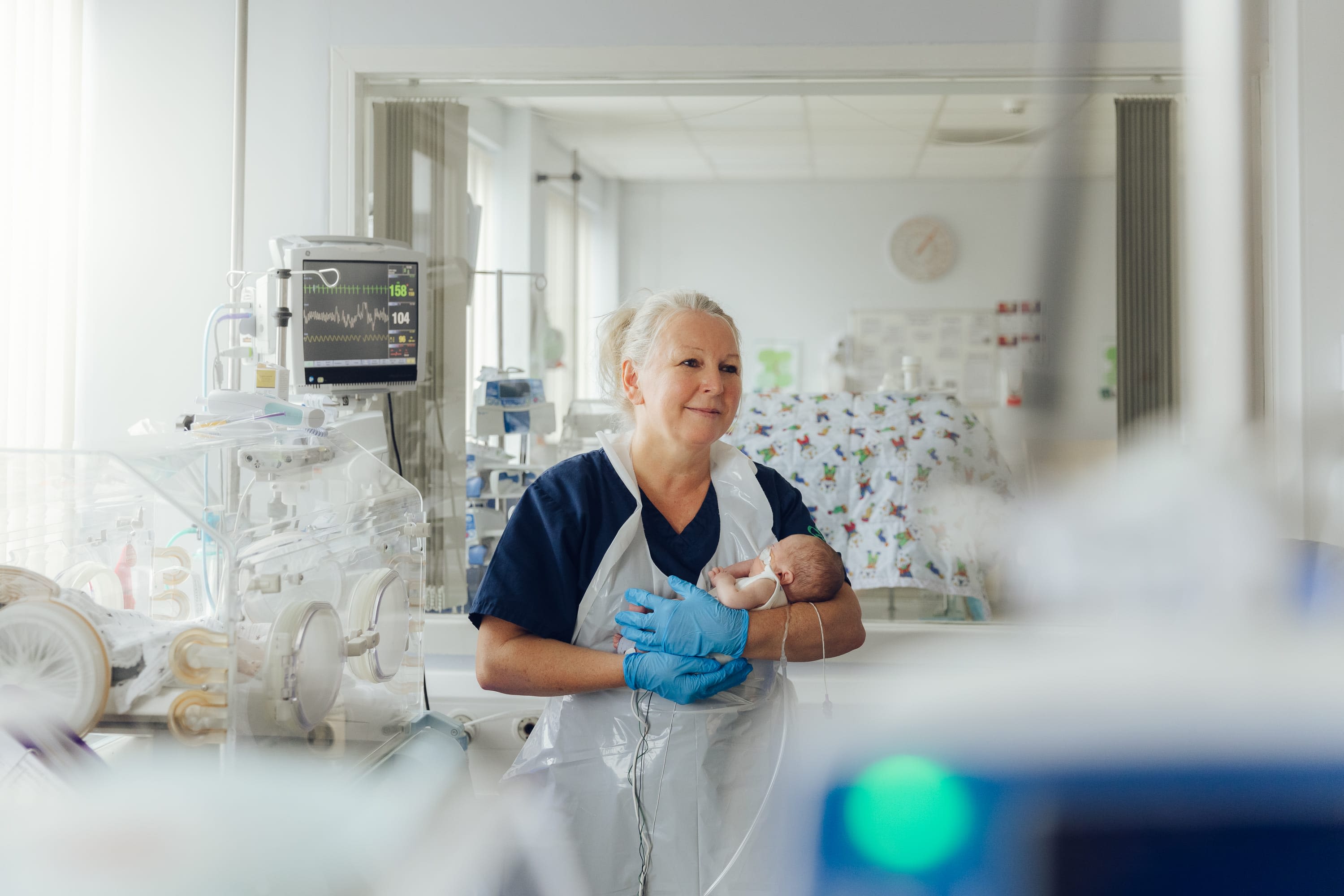
Chairman's foreword
Sharmila Nebhrajani OBE
This year marks the 25th anniversary of NICE, an important milestone in the history of the organisation, and one that presents the opportunity to reflect on our journey.
NICE was established in 1999: to tackle a perceived ‘postcode lottery’ in health and care, and to help evaluate the cost effectiveness of high price interventions. We quickly gained a status as a world-renowned organisation, producing evidence-based, rigorously evaluated guidance on clinical pathways, using health economics and the concept of the quality-adjusted life year (QALY) to assess the optimal use of NHS funds.
A quarter of a century on, our objective fundamentally remains the same. We help practitioners and commissioners get the best care to people fast, while ensuring value for the taxpayer.
Fostering innovation in a changing health and care system
But the health and care landscape we now operate in is markedly different.
An avalanche of innovative, and potentially transformative, novel treatments creates huge opportunities to improve population health. Distinguishing between the best and the rest – and signposting commissioners to the most clinically and cost-effective interventions, while simplifying life for clinicians at the point of care – is a task of accelerating complexity.
Practitioners operate in an environment of unprecedented NHS workforce, financial and capacity pressures, set amidst changing demographics. To foster innovation and its adoption, and to encourage the introduction of new drugs and pathways into an already stretched health system where demand vastly exceeds supply, requires care.
The challenges are daunting. But they also present opportunities. Opportunities to embrace new, transformative technologies. Opportunities to learn from system data to tackle the areas that matter most, such as the pernicious impact of health inequalities. And opportunities to identify the most promising innovations that can make prevention, self-care and shared decision-making a reality across our country.
Focusing on what matters most
This year, to help busy commissioners and clinicians work out where to focus their budget, we have redesigned the way we prioritise topics.
Our new approach, developed in close discussion with system partners, uses a common prioritisation framework across disease areas to identify areas of greatest clinical need and the most promising interventions. This centralised approach, presents a more coordinated and efficient way of ensuring we are addressing the areas that matter most to the system.
Creating high-quality relevant clinical guidance, and identifying the best new products, is a central part of our work. It is critical that our recommendations are subsequently implemented and acted on by the system. For this reason, supporting the adoption of our guidance is now an essential focus. A new programme will develop, generate, publicise and interpret data on the adoption of the most clinically useful innovations. This will help identify where data is strong and where it is less so, to help focus efforts on the even implementation of guidance across the country.
Ensuring we produce timely, usable guidance
We are making progress in speeding up our decisions without compromising quality.
England ranks 6th out of 37 countries in Europe on time, in days, from regulatory approval to reimbursed access to evaluate new drugs, with a far larger programme of work than comparable countries. We are contributing to timeliness through introducing a 45% faster streamlined process for the lowest risk treatments, allowing us to refocus our resources on areas that are more complex.
We are also clearly setting out the data submission timeline companies must follow for medicines on an expedited pathway. For these ‘optimal medicines’, with clear data dossiers and timelines at the outset, NICE aims to publish final guidance 90 days after Medicines and Healthcare products Regulatory Agency (MHRA) marketing authorisation. In 2023/24 we increased the proportion of optimal medicine appraisals completed within 90 days. And we know we can be even faster if all company submissions are in place. This year, for 2 treatments, we published guidance at the same time as MHRA marketing authorisation – glofitimab for a rare form of blood cancer and etrasimod for ulcerative colitis.
Of course, not all topics will be optimal. Some of the most innovative may require a longer, more deliberative process. By identifying early those products likely to ‘diverge’ from the optimal, we can devise tailored pathways reflecting their complexity. System change for effective implementation can then be put in place to increase the chance of approved products being successfully adopted.
A renewed focus on innovation
In recognition of the power of digital technologies to enable people to take more responsibility for their own care, we have expanded our digital health programme.
In the past year, we assessed over 100 digital technologies, including 13 digital therapies for depression and anxiety disorders with a combined potential to help more than 7 million people.
Most recently we produced guidance on 5 digital technologies, for use in the NHS while more evidence is generated, to help manage non-specific low back pain. Such technologies may reduce pain, improve ability to function or return to work while potentially reducing prescribing costs, waiting lists for GPs, physiotherapy and potentially surgery.
NICE continues to contribute solutions to some of the most challenging global health problems of our time. We have worked with NHS England to develop a new evaluation and payment model for antimicrobials, to stimulate vital investment in new drugs that overcome resistance to existing options. Through this model, which will be implemented across the whole of the UK, payments made to companies are based on the value to the NHS and not linked to the volumes sold.
Anticipating the challenges and opportunities of the future
The adaptations we are making to our processes will strengthen our role and make us more agile in the face of an evolving health and care landscape.
And the advance of AI will no doubt challenge us to adapt even further. AI-mediated interventions that learn, interpret and modify in real-time, test traditional models of static, data-driven recommendations. We will also need to consider ethical questions, such as the priority we give to AI interventions that retain a ‘human in the loop’, against autonomous models.
The promise of AI is such that it could fundamentally alter long-established models of clinical trials. But generative AI’s powers and the lack of explainability may also cause us to understand less. Our analysis will need to be able to respond to these innovations, signposting clinicians quickly to the most (and least) valuable interventions, without losing the evidence- based rigour on which our decisions are made.
NICE has achieved much since its formation in 1999. Yet there is much still to do. I am confident that the organisation will rise to the challenges and opportunities ahead, to ensure that innovative, effective and valuable treatments continue to reach people in a timely manner.
Chief executive's foreword
Dr Sam Roberts
I’m delighted to present NICE’s annual report and accounts, which summarises our key achievements and financial activity from April 2023 to March 2024.
This report is my third as chief executive, and it lands in the year that NICE marks its 25th anniversary.
We’re proud of the impact that we’ve had on the health and care system over the past 25 years. We’ve published more than 460 technology appraisals on cancer conditions alone, we’ve developed a whole suite of guidance on mental health, and we’ve helped put together a pioneering payment model for antimicrobials that led to the approval of 2 new drugs.
These are just a few of the achievements we’ve marked in our 25th year. And they are testament to the principles of independence, transparency and rigour that we have maintained during our history.
But as you are well aware, the health and care system is rapidly changing. Digital health technologies, with the potential to transform healthcare, are constantly emerging. Evidence- based healthcare is evolving. The amount of health and care data has grown exponentially. And the healthcare system is facing unprecedented workforce and capacity pressures.
So last year we launched our ambitious transformation plan. The plan ensures we’ll maintain our core values. But we’ll now also focus on:
- relevance
- timeliness
- usability
- impact.
As I reflect on our achievements of the past financial year, it is clear we’ve made significant progress in meeting each of these new principles.
Relevance – ensuring we focus on what matters most
Through our transformation activity, we’re helping practitioners and commissioners tackle the most pressing issues in health and care.
In March, we announced that we’re developing a new way of prioritising our guidance topics. This significant change to our processes will see the creation of a central integrated prioritisation board. It will apply a common prioritisation framework, so that we consider all topics and products in a transparent and consistent way. This means we will be able to produce guidance that is relevant, timely, accessible, and has demonstrable impact.
We are acutely aware of the unprecedented pressures faced by colleagues in health and care. Over the past 12 months, we have supported the system through guidance that can help reduce waiting lists, save practitioners’ time and help improve productivity.
In the autumn, we launched our first guidance and resources on virtual wards to help practitioners and commissioners implement this new model of care. The guidance supports healthcare professionals in managing people with acute respiratory infection safely in their homes, rather than being in hospital.
We recommended home tests for colorectal cancer, which could lead to around 100,000 fewer colonoscopies taking place each year. And positive recommendations on digital weight-management technologies could save up to 145,000 hours of clinician time.
We are also rapidly expanding our digital health programme, assessing more than 100 digital technologies this year. This is a 30-fold increase on the number of technologies we assessed in 2022.
Timeliness
We’re continuing to refine our methods and processes to ensure our guidance is timely, and the most effective medicines reach people fast.
We have achieved our target of timeliness for optimal topics, which are medicines satisfying criteria that allow us to publish guidance within 90 days of marketing authorisation. This year, there was a 57% increase in number of optimal topics published and they were published 50% quicker on average, compared with 2022/23.
Our commitment to help people get the best treatment fast was shown in a first for NICE. This year, on 2 occasions, we delivered guidance on treatments that coincided with them receiving licences from the Medicines and Healthcare products Regulatory Agency (MHRA).
In October, we launched the first modular update to our health technology evaluations manual. The update formally includes our proportionate approach to technology appraisals, which we piloted in 2022-23. Through this streamlined approach, we have been able to produce guidance up to 45% faster than standard processes, benefitting around 380,000 people.
Impact
In November, we held our first annual conference since 2019. The event was a personal highlight of my year. We heard remarkable first-hand stories from those delivering and commissioning care, on how our guidance is having an impact on the system. Some of those stories are peppered across this report – from improving the uptake of measles, mumps and rubella vaccine in coastal communities, to how we worked with a company to deliver draft guidance ahead of MHRA marketing authorisation.
Behind the scenes, we are developing new systems and processes to strengthen the impact of our guidance.
This year, we established better ways of measuring and maximising our impact, to develop further in the coming year. On measurement, we developed a new uptake data directory that illustrates uptake for prioritised quality standard measures and medicines across 19 topics at a national level. The directory consists of 147 quality standard statements and 32 medicines at a national level, that are routinely updated. The directory will support NICE’s topic selection and implementation efforts, as can be seen in the example we have highlighted on exploring access to antenatal appointments. We also established a system for routine feedback from uptake data and piloted an approach for automated reporting of NICE guidance which we will develop further this year as part of our ambition to support a learning health system.
We are maximising the impact of our guidance through working with our partners. We’re continuing the impactful engagement we have already undertaken, and carrying out measures to inform a new approach which aims to be more curious about what matters to people and communities. To deliver this, we have developed a new strategic approach for how we work with people and communities which will be implemented from 2024/25.
We’ve listened to our stakeholders and industry partners who tell us they would like a simpler route to engaging with NICE. So, in November we launched our new NICE Advice service. NICE Advice preserves our highly valued scientific advice, health system engagement and educational services. But it now offers even greater flexibility for all customers and more tailored support for healthtech companies.
Usability
We are simplifying our product portfolio and improving the presentation of our guidance to provide the best experience of using our guidance.
This year, we completed foundational work to improve the usability of our guidance. Central to this is our aim to bring our guidance together by topic so it is clearer to understand and easier to access. To deliver this, we developed interim methods and processes to incorporate technology appraisals in our guidelines, enabling us to start systematically incorporating appraisals of medicines into guidelines in 2024/25. As a result, you’ll be able to access all our guidance on a topic in one place.
We also developed and piloted new methods to assess health technologies that are already in widespread use in the NHS, to inform clinical decision making, commissioning and procurement decisions. This will support practitioners, managers and commissioners to use NHS resources as effectively as possible, to ensure patient and system benefits are maximised, and to secure value for money.
Thank you
I would like to conclude by giving my thanks to the practitioners, commissioners, patient representatives, industry partners and stakeholders for all your contributions to our work. It is through your support and valuable input, that we have been able to make the significant progress in our transformation plan this year. I would also like to thank our chairman and board for their unwavering support in helping us to develop new priorities while we carry out our core role of delivering guidance. And I would like to express my heartfelt gratitude to the staff of NICE, for your energy, diligence and commitment to excellence as the organisation undergoes a period of profound change.
Our 25th year has been one of growth, transformation and excitement. I look forward to the progress we make in delivering our mission in the years ahead.




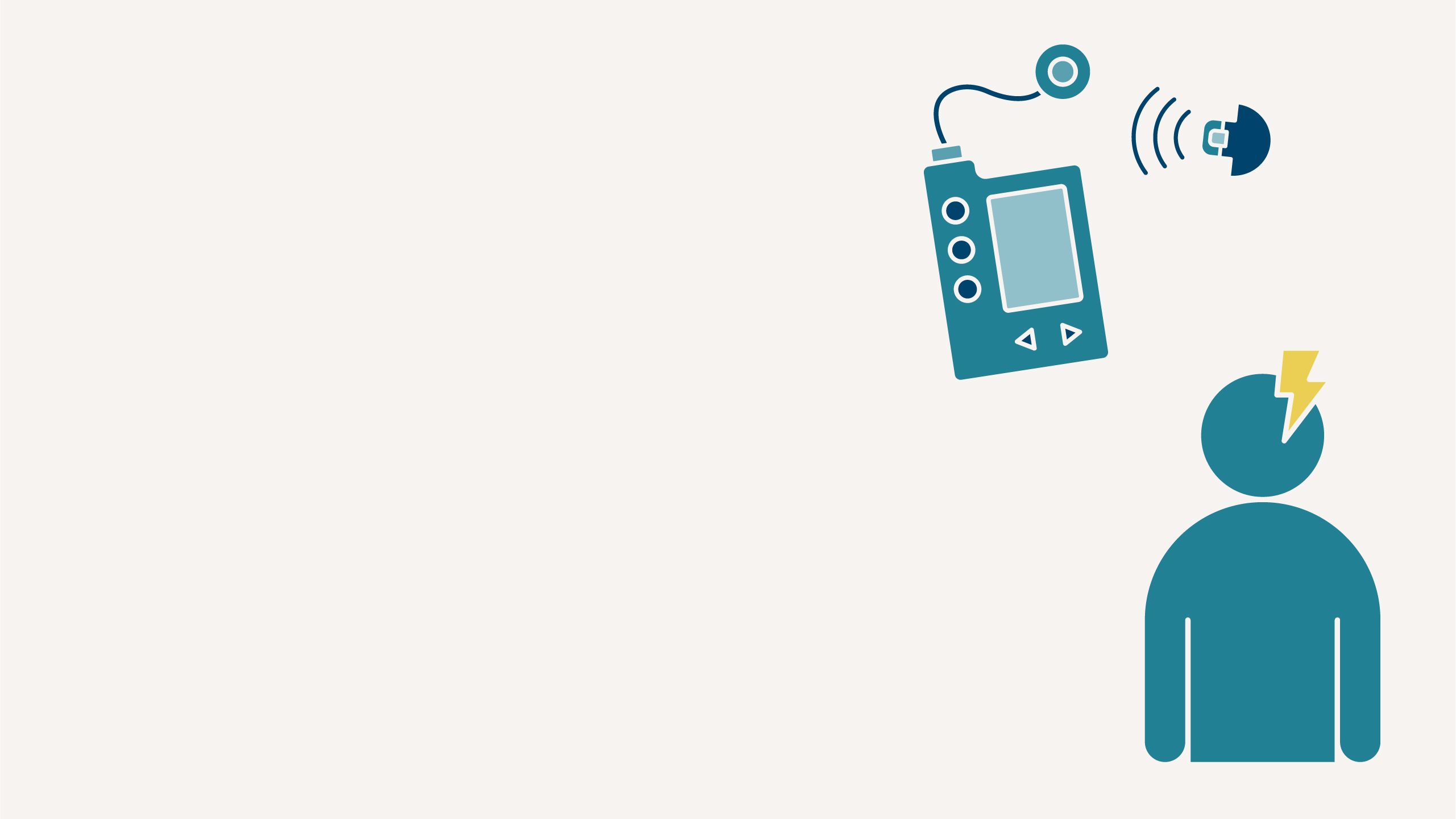

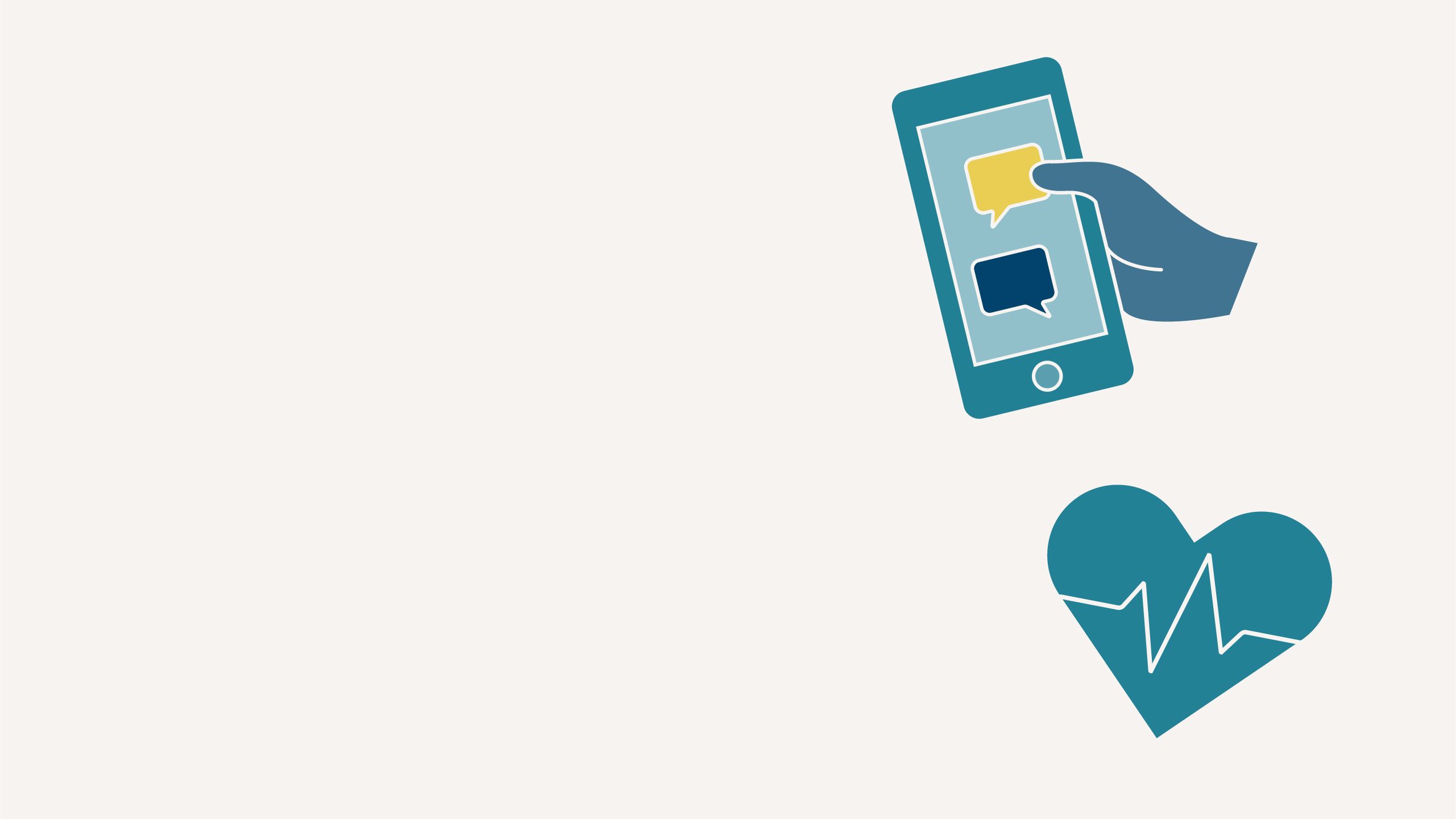
NICE in 2023/24
Relevant, timely, useful and impactful
Our streamlined approach for low-risk treatments is
45% faster
than normal processes and has benefitted 380,000 people so far.
36 days:
average time to medicines access following regulatory approval in optimal* appraisals.
*Medicines satisfying criteria allowing NICE to publish final guidance within 90 days of marketing authorisation.
The UK is now
3rd
among OECD countries for new medicines launched.
2023 PhRMA Global Access to New Medicines Report
We established ongoing access to new sources of
real-world data
to improve our guideline and indicator development.
Our digital health programme is
30 times bigger
than in 2021/22, assessing 105 digital products in 2023/24.
We refreshed our support service for the life sciences industry.
NICE Advice
brings several functions together – making it easier for companies to engage with NICE.
We recommended life-changing hybrid closed loop technology. This has the potential to benefit
150,000
adults and children with type 1 diabetes.
We recommended an innovative drug from a new class of treatments to prevent migraine, making it available to
145,000
people.
Home tests, which we recommended for people with signs of colorectal cancer, could result in
100,000
fewer colonoscopies annually and reduce waiting times.
We made positive recommendations in
86%
of our completed technology appraisal guidance and
83%
of our highly specialised technologies guidance.
Up to
150,000
people in England with a type of chronic heart failure are set to benefit from a new treatment following its approval by NICE.
We recommended
13 digital therapies
for depression and anxiety disorders with the combined potential to help more than 7 million people.


Relevance
Focusing on what matters most
A new approach to prioritising our guidance
As part of our transformation as an organisation, we are making sure we focus on the topics that matter most to the health and care system.
A significant way that we’re doing this is through our new approach to prioritising guidance.
Through a new centralised approach, we aim to produce guidance that is relevant, timely, accessible, and has demonstrable impact.

NICE Advice: A refreshed support service for the life sciences industry
In November 2023, we launched our refreshed support service for pharmaceutical and healthtech companies seeking to enter the NHS market - NICE Advice. Its aim is to drive innovation into the hands of health and care professionals to enable best practice.
NICE Advice brings together several advice, insight and education functions under one umbrella – making it easier for pharmaceutical and healthtech companies to engage with NICE.
The service preserves our highly valued scientific advice, health system engagement and educational services, yet now offers greater flexibility for all customers and more tailored support for healthtech companies.
NICE Advice helped us think about a more robust way to create our economic model. This helped minimise delays to the appraisal process.
From value proposition to evidence generation and market access, NICE Advice works collaboratively with industry partners to drive innovation into the hands of health and care professionals. All the services provided are confidential and provided independently of NICE’s guidance producing programmes. This ensures there are no conflicts of interest.
Following the launch of NICE Advice in 2023, we received an 81% uplift in enquiries and an increase in awareness of our services by 17%.
The META tool report [evidence gap analysis service] proved invaluable for strengthening our UK evidence generation strategy.




Case study
Digital apps for weight loss
Digital treatments and diagnostics have had a transformative impact on health and care over recent years.
The devices have the potential to empower people so that they have a greater role in their own treatment decisions.
At NICE, we are producing increasing amounts of guidance on digital products that range from mental health therapies, to treatments for cardiovascular disease.
This year we have expanded our digital health programme by 30 times, assessing more than 100 digital technologies in 2023.
In October 2023, we published early value assessment guidance on digital weight- management technologies. Our guidance said the technologies can be used in the NHS while more evidence is generated.
Our final guidance says 16 digital weight management technologies can be used in the NHS while more evidence is generated.
By using these platforms over the next 4 years, NICE can learn from the evidence generated to ensure that when we carry out a full assessment, we can ensure that we are balancing delivering the best care and getting value for money for the taxpayer.
New guidance and resources on virtual wards
We recognise that the health and care system is under exceptional pressure.
So, we have been carrying out a range of activity that can support practitioners and commissioners with improving productivity and recovering core services
Virtual wards (also known as hospital at home) allow people to get the care they need at home safely and conveniently, rather than being in hospital.
The NHS is increasingly introducing virtual wards to support people at the place they call home, including care homes. We recognise the potential benefits they have in releasing capacity. But we’re also aware of the challenges they may raise and that the evidence is still evolving.
This year, we launched a range of guidance and resources to help practitioners and commissioners implement this new model of care.
Reducing health inequalities
At NICE reducing health inequalities is a core part of our DNA. It’s one of our core principles.
Our guidance supports strategies that improve population health as a whole, while offering particular benefit to the most disadvantaged.
In 2023, we revised our equalities and health inequalities assessment (EHIA). The revised EHIA is enabling us to better capture health inequalities issues during guideline development. This has resulted in specific recommendations to address differential access to treatments, experience of services and health outcomes.
In addition, we piloted health inequality briefings and a prototype equity tool which have helped to shape recommendations in our guideline updates. We are working with partners to ensure that NICE guidance is embedded in national programmes to reduce health inequalities. Projects include working with the Care Quality Commission to help them evidence approaches to addressing health inequalities in their single assessment framework.
We are also collaborating with the Race and Health Observatory and NHS England to address unwarranted variation in access to NICE recommended antenatal care among some ethnic groups.
Our health inequalities web resource continues to receive high engagement with our users. The resource maps our guidance recommendations to existing health inequalities frameworks such as the adapted Labonte model and Core20PLUS5.
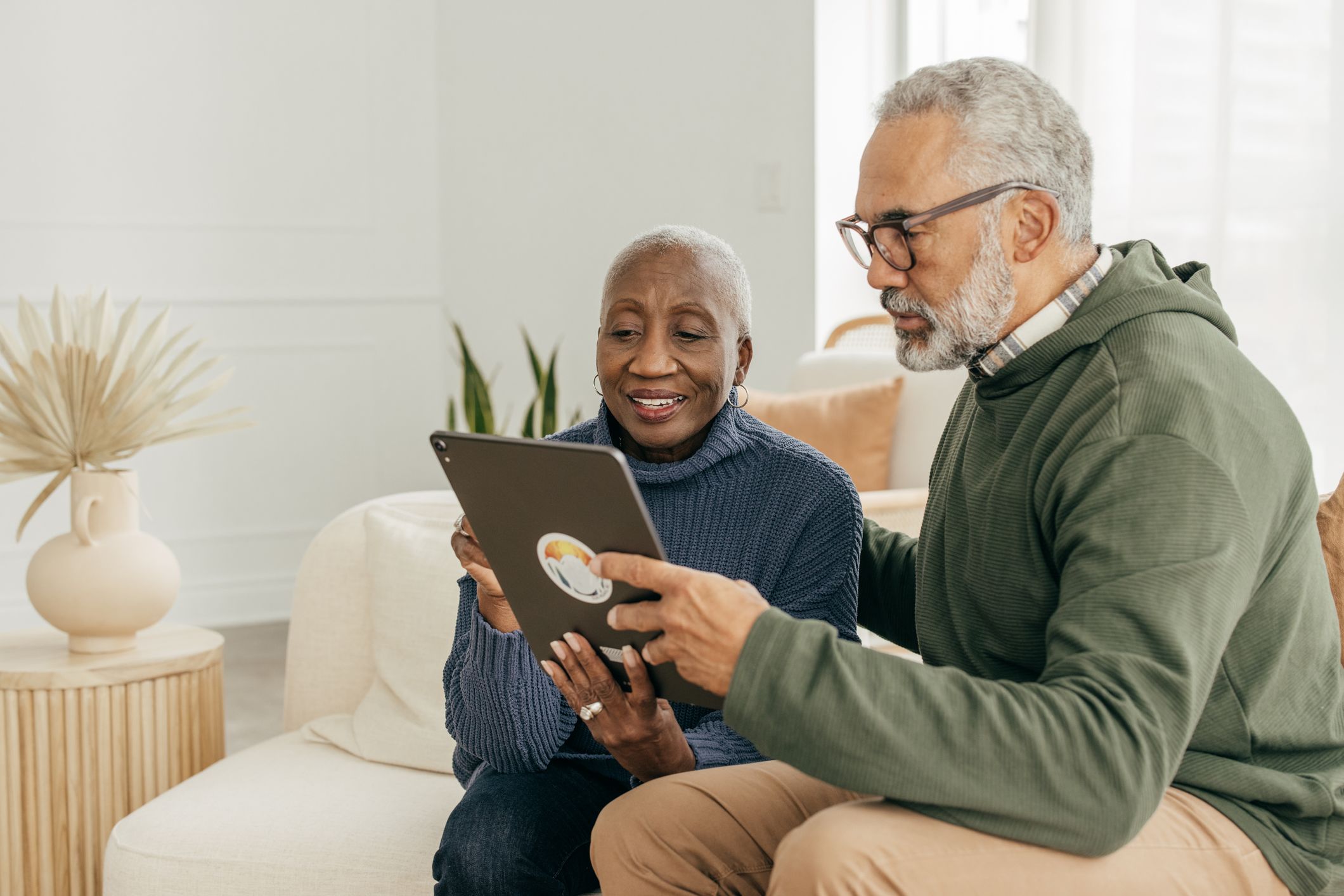
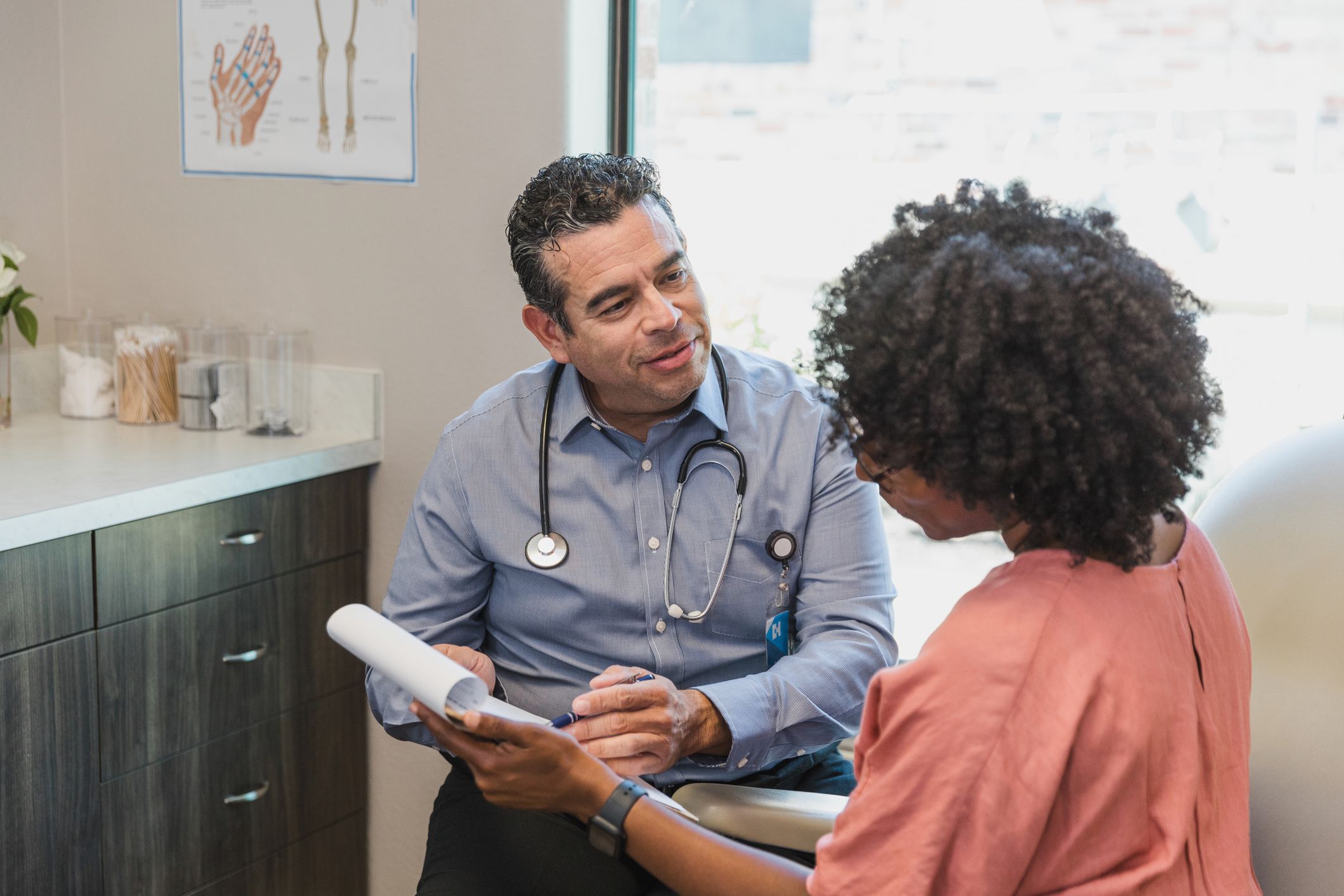
Case study
Game-changing guidance on type 1 diabetes
In December 2023, we launched guidance on hybrid closed systems for managing blood glucose levels in type 1 diabetes.
Also known as ‘artificial pancreas’, hybrid closed loop systems comprise a continuous glucose monitor sensor attached to the body.
This transmits data to a body-worn insulin pump. It calculates how much insulin needs to be automatically delivered into the body to keep blood glucose levels within a healthy range.
People can use these systems to continue normal activities without the need for regular finger prick testing or injecting themselves with insulin to control their blood sugar levels. Keeping blood sugar levels under tight control greatly reduces the risk of complications such as blindness and amputations
Using hybrid closed loop systems will be a game changer for people with type 1 diabetes. By ensuring their blood glucose levels are within the recommended range, people are less likely to have complications such as disabling hypoglycaemia, strokes and heart attacks, which lead to costly NHS care. This technology will improve the health and wellbeing of people.
A group of healthcare professionals, on a hospital ward
A group of healthcare professionals, on a hospital ward
Case study
Increasing the uptake of MMR vaccines in coastal regions
In January 2023, the NHS launched a campaign to encourage greater uptake of the measles, mumps and rubella (MMR) vaccine. The drive occurred as cases of measles were rising across the country.
This year, we highlighted how an NHS England team in south-west England used NICE products to support increasing uptake of the MMR vaccine across the region. The team referred to NICE’s guideline and quality standard on vaccine uptake to support its work. By using NICE’s baseline assessment tool, the team was able to benchmark current practice. They then identified areas where practice could be improved. The team shared this learning with its stakeholders through a webinar, to support local action to maximise vaccination uptake.
NICE gave us the evidence base and assurance that underpins the work we’re doing. It provided us with a lever to influence commissioning – so that we’re directly targeting the communities where we know vaccine uptake is low. It also provides us with a holistic view – allowing data to work alongside real-world evidence to influence practice.


Timeliness
Helping to get the best care to people, fast
A streamlined approach to our technology appraisals
The UK remains competitive when compared with other countries in Europe in terms of access decisions.
However, we know that there is more we can do to improve and sustain our position on timeliness of access to innovative treatments.
So, we are carrying out a range of projects to help improve the timeliness of our guidance.
In 2023, we launched the first modular update to our health technology evaluations manual.
The update includes our proportionate approach to technology appraisals, which we piloted in 2022. Through a proportionate approach, NICE can apply light-touch, faster evaluations to simpler, low-risk treatments. This allows faster guidance to be produced on these topics.
So far, NICE has published final guidance on 11 treatments through a proportionate approach. The guidance was produced up to 45% faster than standard processes, benefitting around 380,000 people
Publishing guidance on medicines at the same time as licences are issued
This year, we have significantly reduced the mean and median number of days between marketing authorisation and guidance publication.
And we increased the percentage of medicine appraisals completed within 90 days by 28% compared to 22/23.
We also achieved a significant milestone in providing guidance on a new treatment at the same time as it received its licence from the Medicines and Healthcare products Regulatory Agency (MHRA).
We recommended glofitimab for people with advanced lymphoma, which works by encouraging the healthy cells in the body that are responsible for the immune system to destroy the cancer cells.
Shortly after, we published guidance on a new 1-a-day pill as an option for treating sever ulcerative colitis. The guidance was published on the same day that the treatment was granted a licence by the MHRA, in what was a first for NICE.
Delivering guidance to the NHS at an unprecedented rate
In August 2023, we produced guidance, at a faster rate than ever before, on a new medicine for a rare condition. Through collaboration with stakeholders, we were able to publish draft guidance on a treatment for Pompe disease ahead of it gaining marketing authorisation by the MHRA.
This is the first time that such an event has happened in the history of NICE.
One of the reasons that the guidance was issued so quickly, is because it was one of the first medicines that used the Innovative Licensing and Access Pathway (ILAP).
In their preparations for submitting evidence as part of the appraisal process, Amicus chose to use the NICE Advice health economic model peer review service.
ILAP enabled regular and open dialogue with NICE which was crucial in ensuring patients were able to access this medicine as early as possible.
Faster access to innovative technologies
In 2023, a new pilot project for faster access to innovative technologies was launched. The Innovative Devices Access Pathway (IDAP) is an initiative between NICE and a range of partner organisations.
The aim of this pathway is to support the rapid development of innovative technologies that can be introduced into the NHS to address unmet clinical needs for people and healthcare professionals at the earliest opportunity, without compromising on standards of safety, quality, and effectiveness.
This pathway will offer companies the direction they need to properly demonstrate the value of innovations that have the potential to address unmet need in the system.
The opportunity for developers of game changing health technologies to access expertise from both regulators and health technology appraisers is a unique aspect of IDAP





Usability
Making sure our guidance is useful and useable
Including published technology appraisals in our guidelines
Our guidance has been used by countless health and care practitioners and commissioners, helping thousands of people in the process.
But we know that the needs of the health and care system are changing. So, to ensure our guidance continues to be relevant, we’re adapting our processes to ensure it is useful and useable.
As part of this work, we’re bringing our guidance together by topic, so that it’s all in one place, clearer to understand and easier to access.
This key project, which began in 2023, will allow us to include our published technology appraisals guidance in our guidelines. This means you’ll be able to access all our guidance on a topic in one place.
Through this project, we’re looking to include our published technology appraisals guidance in our guidelines.
This will mean:
- it’s easier for commissioners, practitioners and people to access and decide on treatment options
- there’s better adoption of promising new treatments across the NHS.
We expect the project will help support the uptake of promising, cost-effective medicines and treatments in the NHS. This will lead to a more effective use of NHS resources, and better outcomes for people.
Advice on health technologies already in use
We are developing new ways of assessing technologies that are already in widespread use in the NHS, to support commissioning and procurement decisions.
This project will help clinical practitioners, managers and commissioners to use NHS resources as effectively as possible, to ensure patient and system benefits are maximised, and to secure value for money.
With around 500,000 technologies in regular use in the NHS, it can be difficult for clinicians, managers and commissioners to identify which products offer genuine innovation and good value. Both people and healthcare professionals can benefit from choice of technology.
But more choice can make it difficult to identify the right technology, for the right patient, at the right price. Furthermore, over time, technologies in use often undergo changes and adaptations. But there is little consistency in how these are valued and recognised.
Through this project, we will assess which technologies in a category represent value for money and whether price variations are justified by
Creative solutions to complex problems in health technology assessment
The number, range and complexity of technologies we review has never been greater.
The way these technologies are regulated is also developing rapidly. This poses a challenge to NICE when we’re assessing some products.
The pace of innovation can sometimes mean using our existing methods alone might not meet the needs of people, the public, and health and care system partners.
It’s our duty to keep ahead of these developments to make sure people gain rapid access to the newest and most promising treatments.
To address these challenges, we’ve established the HTA Lab, which allows us to:
- develop technical and policy solutions that enable us to evaluate innovative health technologies
- make sure that our guidance is useful and useable, particularly for technically complex and disruptive technology.
This year the HTA Lab has contributed to work on virtual wards, rapid entry to managed access and methods for the evaluation of diagnostics used in multiple care pathways.
Ensuring the voice of people and communities remains central to our work
We know the value that the expertise and experiences of people and communities bring to our work at NICE, and in our recommendations to the health and care system.
To help us understand what we were doing well, and what could be improved, we commissioned an independent review and listening exercise to reflect on how we currently involve and engage people and communities.
This work has underpinned the development of a new 3-year strategy: ‘Working alongside people and communities at NICE’.
Our vision is to have a best-practice approach, to improve the impact of our guidance and ensure the best care for people and communities.
We will deliver this vision through 5 key areas of focus:
- Impactful involvement and engagement: involve the right people, at the right time, in the right way.
- Tailored approaches: tailor the way in which people and our communities can engage with NICE.
- An innovative culture: test with, and learn from, new and innovative ways to work alongside people and communities.
- Productive partnerships: transform our approach and ways of working with people and communities.
- Focus on people first: embed an ethos of curiosity for involvement and engagement across NICE.
Following publication, we will translate this new strategy into specific annual deliverables and activities, in partnership with the people, communities and partners we work alongside.
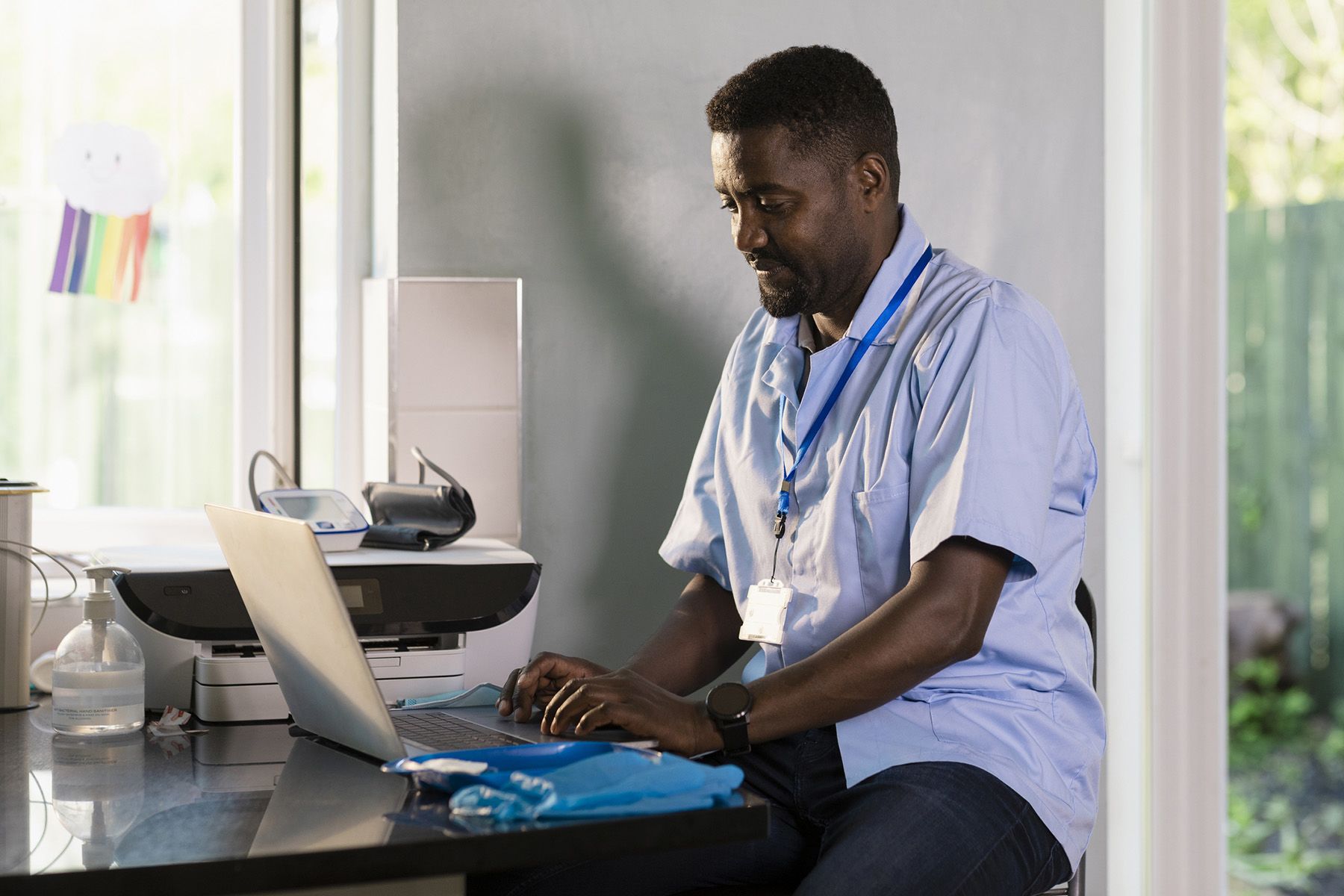

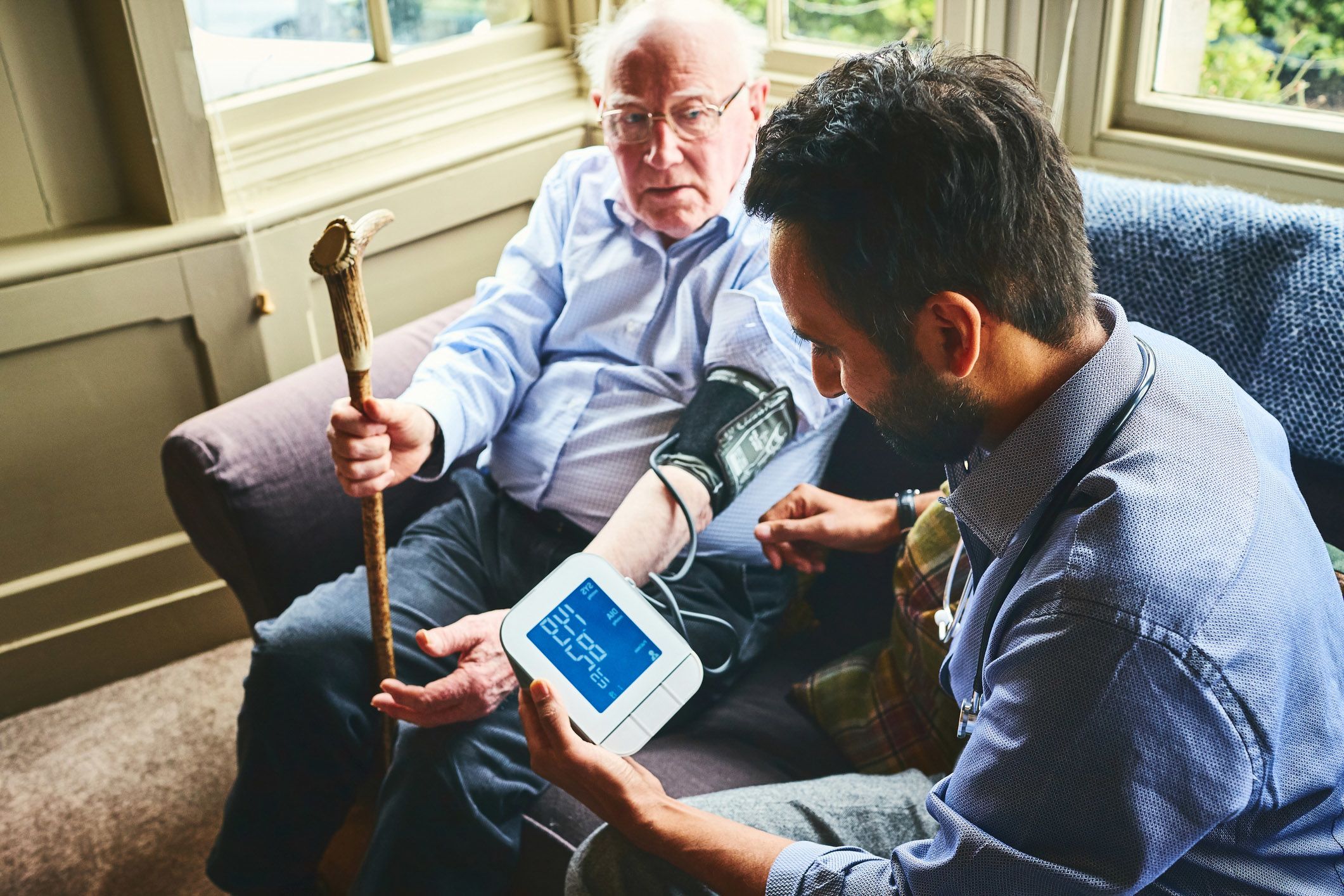



Impact
Working with our partners to increase the uptake of our guidance
Making the most of real-world evidence
Over the past 25 years, our guidance has had a wide-ranging and significant impact on improving the lives of people. In 2023/24 we have begun a range of activity that will maximise the impact of our advice.
Real-world data can improve our understanding of health and social care delivery. It offers important insights into patient health and experiences, and the effects of interventions on patient and system outcomes in routine settings.
At NICE, using real-world data to resolve gaps in knowledge is one of our key priorities. In 2022, we launched our real-world evidence framework to help deliver on this ambition.
This year a review of the impact of real-world evidence at NICE found:
- more than 95% of evidence reviews in our clinical guidelines make use of real-world data in their cost-effectiveness modelling
- a review of single technology appraisals for cancer drugs found 96% appraisals used real-world data in their cost-effectiveness modelling
- across all appraisal programmes at NICE, published between 2022-2023, real-world evidence featured in almost 3-quarters of committee discussions.

Case study
Using real-world evidence to inform our guidelines on cardiovascular disease
Cardiovascular disease (CVD) is the leading cause of death worldwide, accounting for almost 18 million deaths each year (over 30% of all global deaths). Around 7 million people in the UK have CVD.
Over 70 million prescriptions for statins are dispensed in England each year, costing the NHS around £100 million. The total healthcare cost of CVD in England is estimated to be £7.4 billion.
Despite the weight of conclusive research and consistent national and international guidelines, many people at significant risk of CVD do not receive cholesterol-lowering treatment, or they receive inadequate treatment.
In December 2023, we launched updated guidelines on CVD which were informed by real-world evidence. We used primary care records linked to hospital and death registry data to describe the UK population in CVD secondary prevention. This included their rates of subsequent CVD events, such as stroke and myocardial infarction, and their cholesterol levels.
This data helped us to estimate the cost-effectiveness of different cholesterol targets for secondary prevention in the UK. We were then able to identify a new optimal cholesterol target, which will be used to determine whether and when a person with CVD who is on a statin should be escalated to more expensive cholesterol-reducing therapies. The target was included in the new national guideline, and also a new indicator for GP performance.
Maximising the impact of our work
We’re carrying out a range of activity to support practitioners and commissioners to improve the uptake of our guidance.
This year, we have begun using data-led insights to increase guidance uptake. We’re doing this by looking at data in areas that are health and care system priorities including 14 quality standard topics and 7 medicine groups.
Over the past 12 months, we have developed a data directory based on 21 health and care priorities. We are using this directory to:
- measure 147 quality standard statements and 32 medicines at a national level, that will be routinely updated
- determine the potential for analysis of data across the country, including availability of geographic and demographic breakdowns. We have collated data from across the health and care system which tells us how well our guidance is being used, and we developed insights from this to inform how we prioritise our implementation activities.
We are working with practitioners and topic experts to identify areas with unwarranted variation and clinically significant trends. Over the course of 2024, we will deliver quarterly insight snapshot reports across the agreed priority areas, to inform implementation and topic selection functions.

Case study
Measuring the uptake of booking appointments for pregnant women
One of the statements in our quality standard on antenatal care is that pregnant women are supported to access antenatal care by 10 weeks of pregnancy.
The rationale for this is it enables early identification of potential medical, obstetric, and social risks, allowing care to be planned accordingly. It also allows for early sharing of information on lifestyle factors, such as smoking.
However, we found that there is significant variation in the implementation of this. In some providers, over 80% of women have their booking appointment by 10 weeks of pregnancy.
At others, this is less than 20%. Furthermore, the proportion of white women who have a booking appointment by 10 weeks of pregnancy is 22% higher than that of Black or Black British women.
As a result, we have met with external experts to further understand the data and develop plans to address this.
We have developed a proposed partnership approach with the NHS Race and Health Observatory (RHO), focused on variation by ethnicity and deprivation. We are developing an awareness-raising resource in collaboration with the RHO.
The resource will be aimed at practitioners that aims to highlight health inequalities and prompt action. We aim to complete this work by autumn 2024.
In addition to this topic specific work, we are also working together with the RHO to develop a memorandum of understanding (MOU) for future ways of routinely working together. This is to ensure health inequalities are considered and maximised in all our work.
The MOU will be in place by August 2024 and include agreed objectives and an associated action plan.
Case study
Digital adaptation kit for chronic kidney disease
Measuring the uptake of our guidance is a critical first step to supporting its implementation and ultimately understanding our impact.
To make this happen, we’ve made important progress this year by developing an approach to how NICE can deliver ‘computable guidance’. Computable guidance is a representation of written guideline recommendations in computer interpretable format – and by making our recommendations computer-readable, they will be more usable in clinical practice.
To develop our approach to computable guidelines, informed by the World Health Organisation smart guidelines approach, we’ve focused on developing a Digital Adaption Kit (DAK). This is a software-neutral, operational, and structured data model.
We have developed a DAK for our quality standard on chronic kidney disease. The resource provides a structured way of making our recommendations more computable across systems used by professionals in healthcare settings. We developed this resource though collaborating with clinicians, academics and industry experts working in computable guidance.
We are exploring ways in which DAKs can be used in health and care, including the potential to test with primary care practitioners.
NICE and international collaboration
NICE is at the global forefront of health technology assessment and guideline development. We recognise that we can contribute to the improvement of health and care outcomes in other countries.
We also appreciate that there is much we can learn from international partners to shape and improve our own work.
NICE International
NICE International supports countries to improve their nation’s health and wellbeing, helping to drive improvements in evidence-based decision-making. 2023/24 saw the successful delivery of 41 engagements to 23 different countries.

Stay informed about our work
Subscribe to our newsletters to keep up-to-date with important developments.
You’ll receive information on:
- our latest guidance
- implementation advice and case studies
- news, podcasts and blog posts
- upcoming consultations, meetings and events
- how you can engage with us.
















